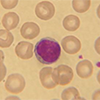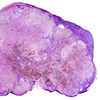Dehydroepiandrosterone Sulphate (DHAS) (DHEAS)
Specimen Volume
1 ml whole bloodSpecimen Transport
Usual transport to laboratory.Sample Preparation
Centrifuge and separate serum
Turnaround Time
1 weekSample Processing In Laboratory
Centrifuge and separate serum
Sample Stability
2 days at 4ºC, 2 months at -20ºC
General Information
DHAS a weak androgenic that plays an important role in the development of male secondary sexual characteristics at puberty. It can metabolize to more potent androgens like androstenedione and testosterone, and thus be an indirect cause of hirsutism or virilisation. DHEAS is measured to evaluate adrenal function and to investigate causes of virilisation, hirsutism, alopecia in women or polycystic ovary syndrome (PCOS). It is also of value in the specialist assessment of disorders of sex development, such as in the assessment of ambiguous genitalia, or of adrenarche and delayed/precocious puberty. DHEAS concentrations are normally high in both male and female newborns. They drop sharply shortly after birth, then rise again during puberty. DHEAS concentrations peak between the ages of 18 to 30 years and then slowly decline with age.
Patient Preparation
None. Sample can be collected any time of day.
Notes
DHAS is a weak androgen derived by conversion of intermediate steroid hormones in the adrenal cortex. It is the principle androgen secreted by the adrenal and is the most abundant steroid hormone in the body. DHAS levels are age dependant and increase at puberty. In men, some DHAS may derive from the testes, partly accounting for the sex difference which emerges at about age 15. This hormone is not produced by the ovaries even under pathological conditions. In itself DHAS is only weakly androgenic, but it can metabolize to more potent androgens like androstenedione and testosterone. DHAS exhibits no significant diurnal variation, or dependence on sex-hormone binding globulin concentrations. Its abundance, together with its within-day and day-to-day stability, makes it an excellent direct indicator of adrenal androgen output.
Reference Range
Please contact the duty biochemist for age/sex related reference ranges/ 0121 371 6543
Specifications
-
EQA Status:
NEQAS
- EQAS Scheme: Yes








